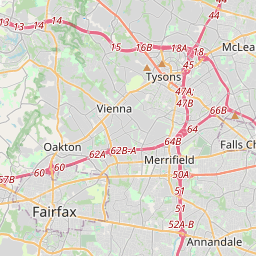Inscription
A Self-Reliant People
—Greater Deanwood Heritage Trail —
If you had stood here 100 years ago, you might have heard the cheering crowds and thundering hoofbeats of Benning Racetrack just across the tracks to your right.Beginning in 1890, Benning was the best-equipped race course in Washington. Some of the nation's leading thoroughbreds had their first runs on Benning's finely cushioned, sandy training grounds. Presidents and plumbers alike attended and placed bets, inspiring the Evening Star to declare: "Nowhere may such a cosmopolitan crowd be seen as at Benning."
In 1908 reform laws ended legal gambling at Benning. Nevertheless and despite the loss of the elegant grandstand to fire in 1915, horse training and automobile races continued into the early 1930s. Although Congress debated bills to revive betting, religious reformers and animal rights activists defeated them, and the race track closed for good.
In 1942 Howard University Architecture Professor Albert I. Cassell (1895-1969) purchased the old racing ground to build Mayfair Mansions, the expansive Colonial style apartment complex he designed. Elder Lightfoot Solomon Michaux, famed Washington evangelist and host of the CBS radio show "Happy Am I," became a major investor.
Mayfair Mansions opened in 1946, at a time when housing covenants severely limited options for
African Americans. The complex provided 500 first-rate, affordable units to working- and middle-class families. Of the development, Elder Michaux said, "Some people talk about going to Heaven and living well. I believe in people living well down here."
Mayfair Mansions, one of the city's earliest garden apartment complexes was listed on the DC Inventory of Historic Sites and the National Register of Historic Places in 1989.
Reverse:
Long a Country Town at the edge of Washington DC's urban center, Deanwood was forged out of former slave plantations during decades following the Civil War. It became one of Washington's earliest predominantly African American communities.
Greater Deanwood today encompasses the historic neighborhoods of Deanwood, Burrville, Lincoln Heights, and Whittingham.
In the 1800s, much of Washington's development followed decisions made by city leaders and investors, who favored areas northwest of Anacostia. Land here remained relatively untouched, and many streets were unpaved into the 1960s. Because builders chose not to apply racial restrictions on who could buy here, African American migrants found Deanwood welcoming, affordable, and convenient. The pioneering National Training School for Women and Girls, founded by Nannie Helen Burroughs (whose portrait appears on each Deanwood Heritage
Trail sign), attracted educators to the neighborhood. New residents often built their own homes and created communities where for years no one locked their doors, adults treated all children as their own, and children behaved accordingly. On this trail you will see rich parkland, handcrafted dwellings, and religious and social gathering places that have made Deanwood an oasis of dignity and self-determination for generations.
Details
| HM Number | HM238H |
|---|---|
| Tags | |
| Marker Condition | No reports yet |
| Date Added | Monday, November 27th, 2017 at 7:03am PST -08:00 |
Pictures
Locationbig map






| UTM (WGS84 Datum) | 18S E 331330 N 4307459 |
|---|---|
| Decimal Degrees | 38.89983333, -76.94505000 |
| Degrees and Decimal Minutes | N 38° 53.99', W 76° 56.703' |
| Degrees, Minutes and Seconds | 38° 53' 59.4" N, 76° 56' 42.18" W |
| Driving Directions | Google Maps |
| Area Code(s) | 202 |
| Closest Postal Address | At or near 4000-4040 Hayes St NE, Washington DC 20019, US |
| Alternative Maps | Google Maps, MapQuest, Bing Maps, Yahoo Maps, MSR Maps, OpenCycleMap, MyTopo Maps, OpenStreetMap |
Is this marker missing? Are the coordinates wrong? Do you have additional information that you would like to share with us? If so, check in.
Nearby Markersshow on map
Maintenance Issues
- Is this marker part of a series?
- What historical period does the marker represent?
- What historical place does the marker represent?
- What type of marker is it?
- What class is the marker?
- What style is the marker?
- Does the marker have a number?
- What year was the marker erected?
- Who or what organization placed the marker?
- This marker needs at least one picture.
- Can this marker be seen from the road?
- Is the marker in the median?

Comments 0 comments